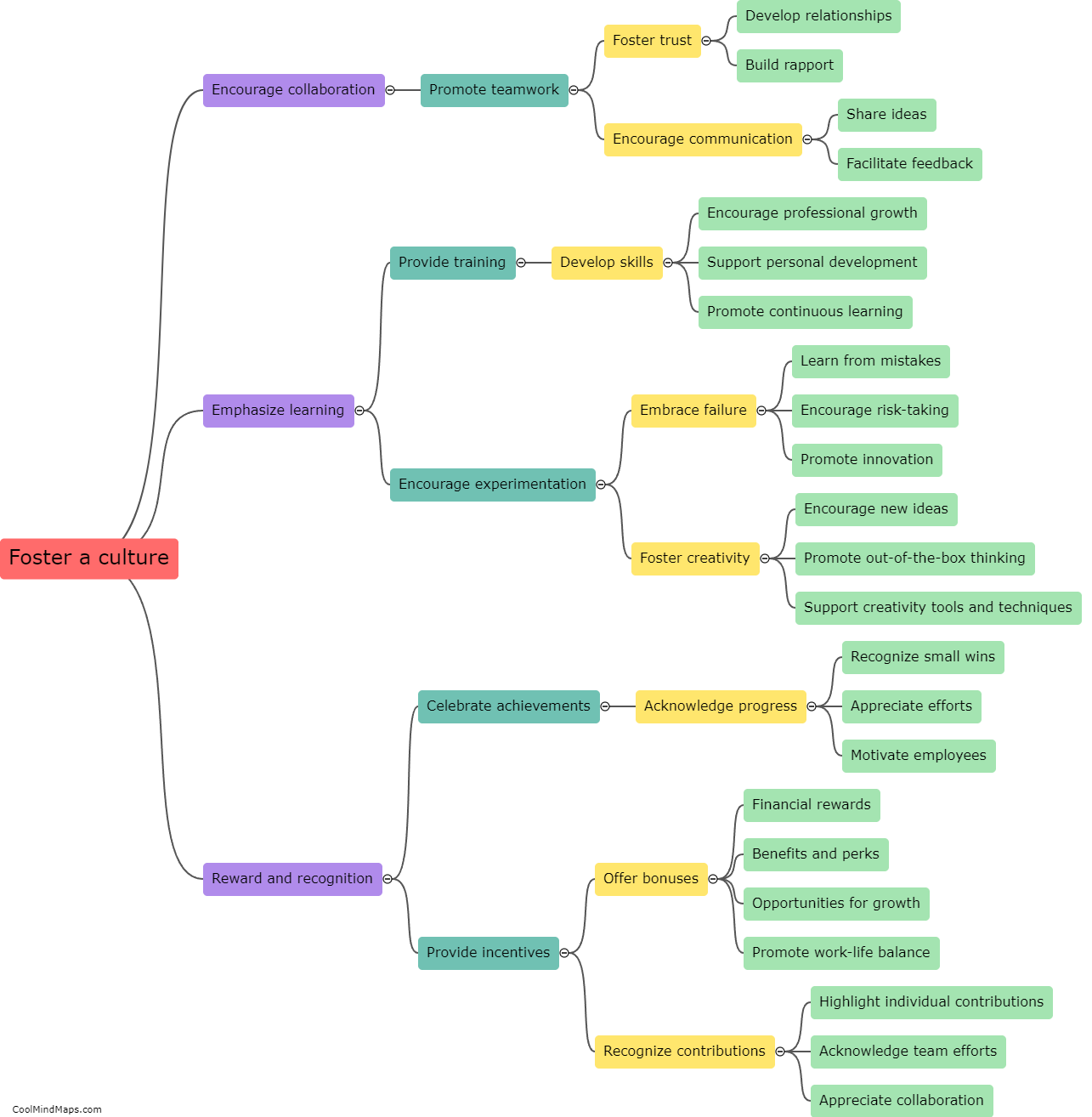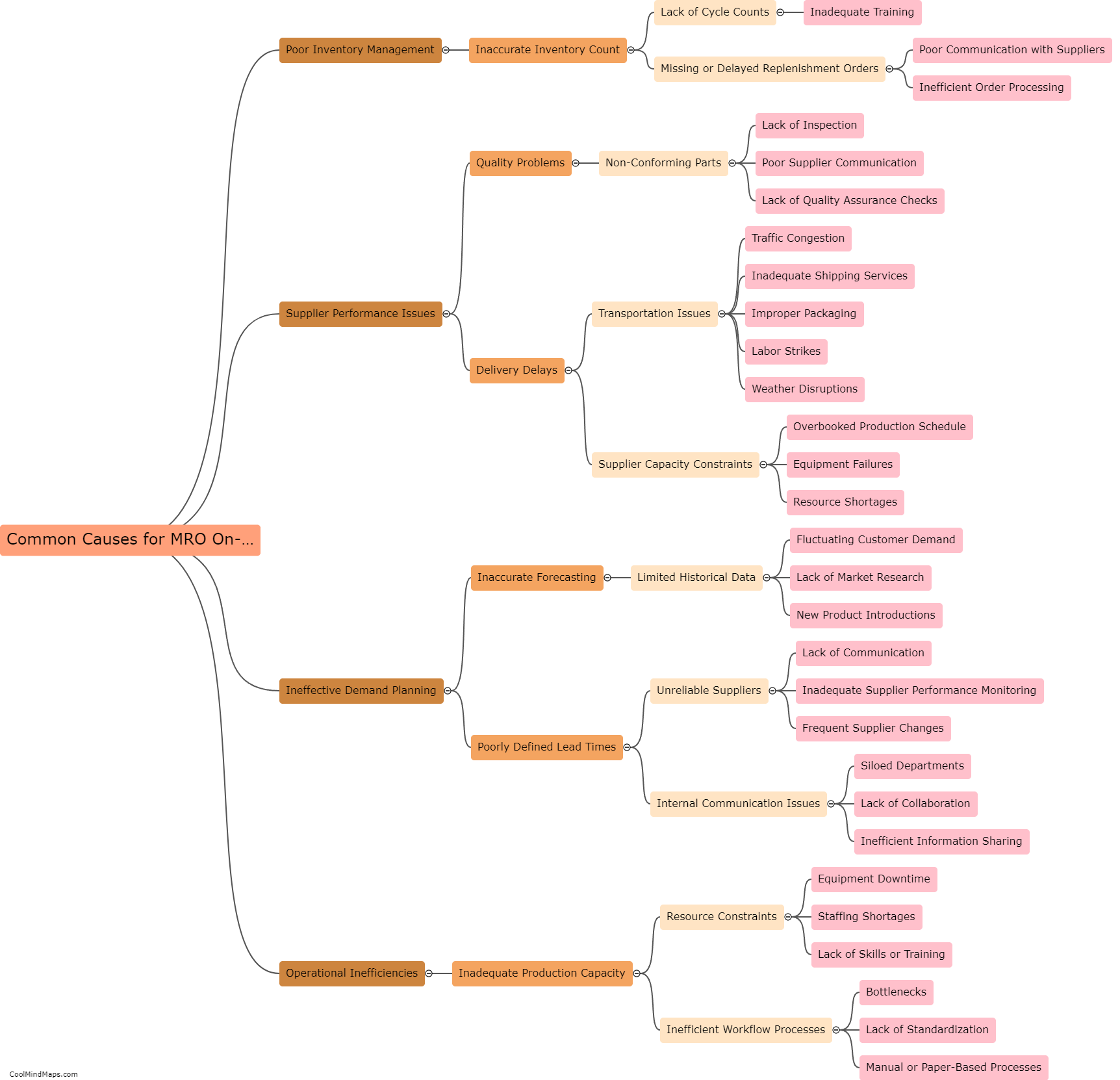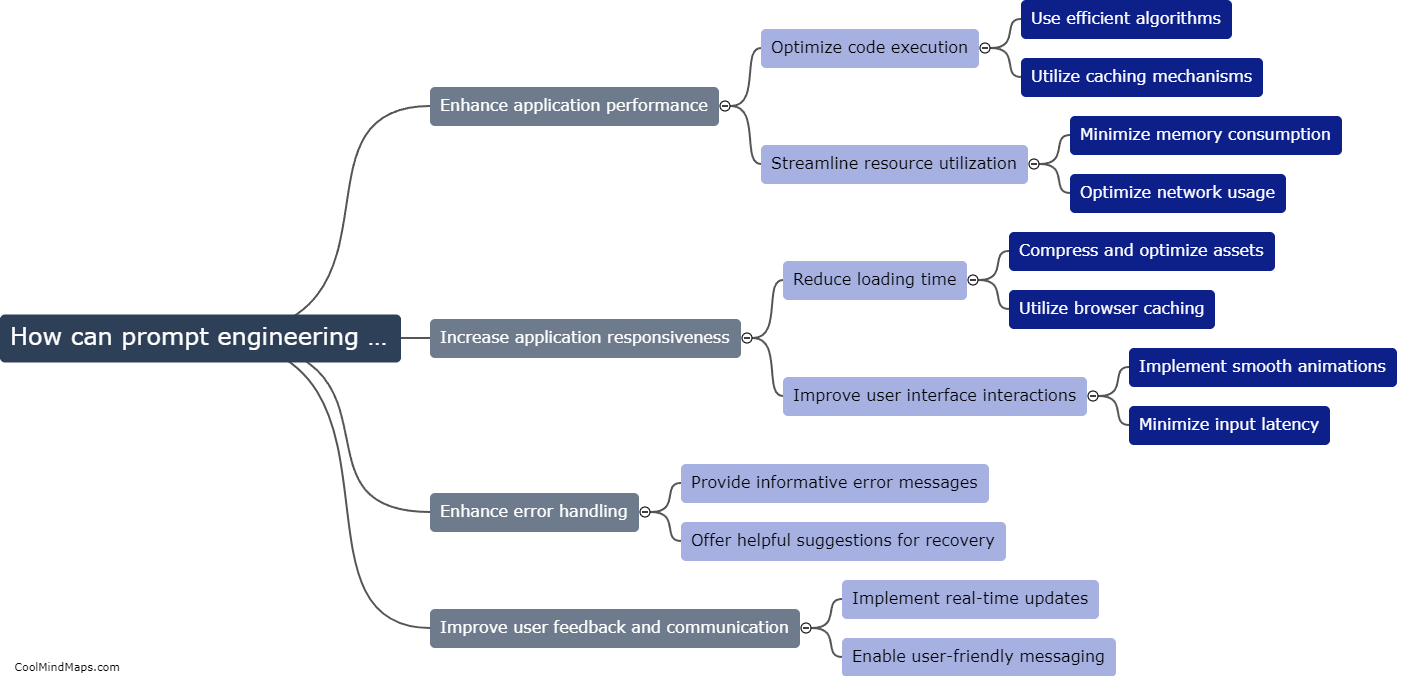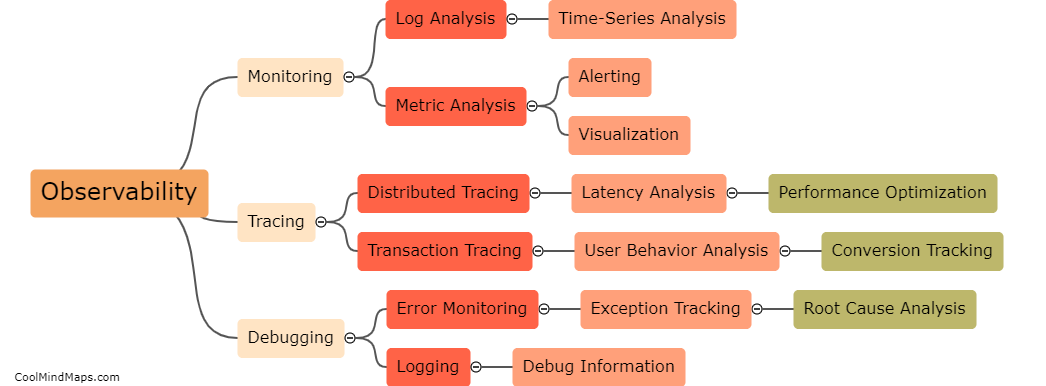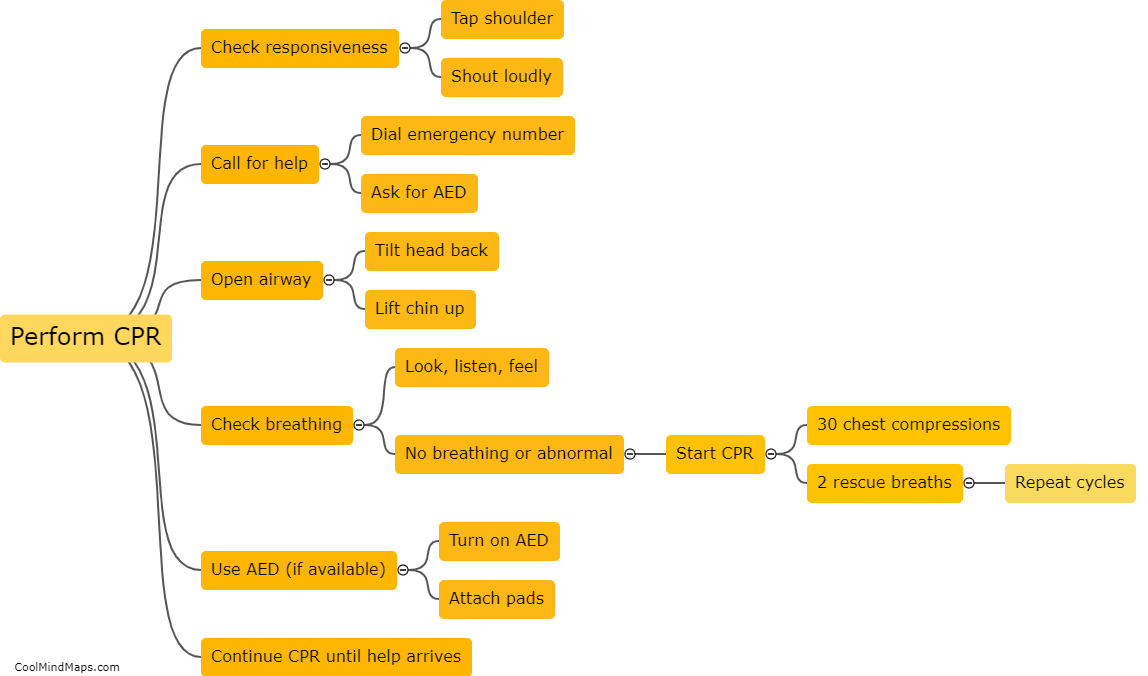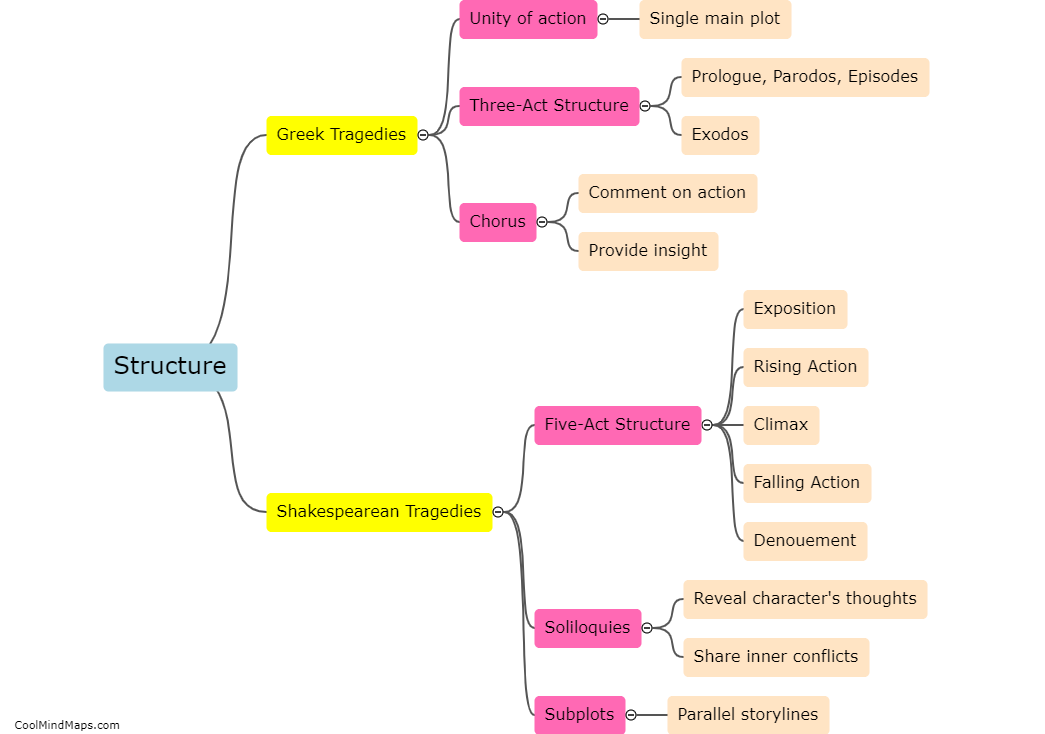What is the structure of a Greek tragedy?
Greek tragedies typically follow a specific structure that consists of five key elements. First, there is the prologue, which establishes the background and introduces the main characters. This is followed by the parodos, where the chorus enters and presents their perspective on the events. The third part is the episodes, which are dramatic scenes where the characters interact and advance the plot. These episodes are often interspersed with choral odes to provide commentary and reflection on the events. The fourth part is the exodus, which serves as the conclusion of the play, tying up loose ends and often concluding with a moral message. Finally, there is the stasimon, which are choral passages that follow certain episodes and provide further insights and emotions. This structure of Greek tragedy helps to create a cohesive and impactful storytelling experience.

This mind map was published on 16 August 2023 and has been viewed 78 times.
